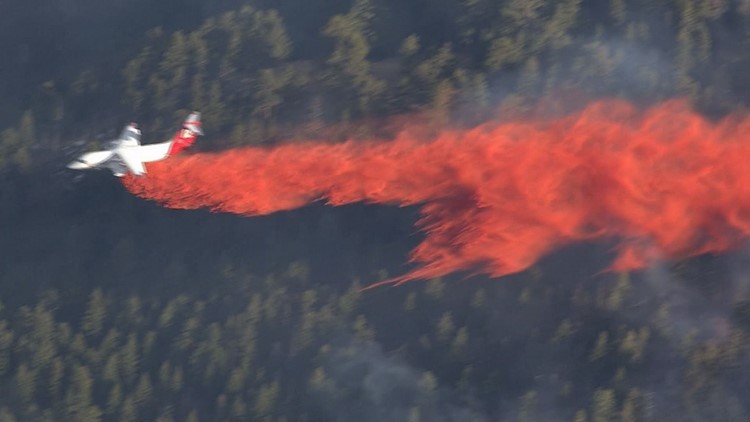KUSA — As planes fly above the wildfires in Colorado, a bright red cloud trails behind them.
The substance will likely land on the ground, or maybe even a house, and is meant to stop flames in their tracks before they can spread any further.
Between these colorful airshows, firefighting aircraft make pit stops at air tanker bases, like the Jeffco Air Tanker Base in Broomfield, to load up on the retardant - a process involving several people to fill even one plane.

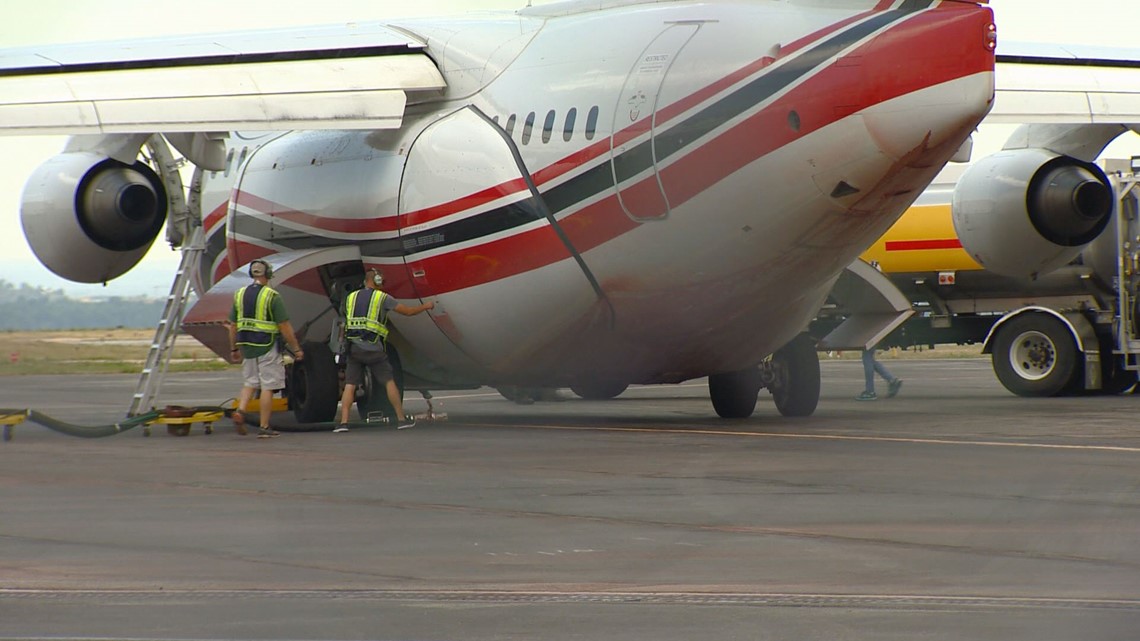
“It’s a whole symphony of action that takes place,” said Laura McConnell, spokeswoman for the U.S. Forest Service. “The tanker base is a place where the heavy aircraft, single-engine air tankers come in to be loaded with retardant and used on emergent incidents around the region.”
Such bases are located throughout Colorado, in Broomfield, Colorado Springs, Pueblo, Durango and Grand Junction.
The Jeffco Air Tanker Base, which is located on property of the Rocky Mountain Metropolitan Airport, is equipped with three large tanks that hold 12,000 gallons of concentrated fire retardant. It's mixed with water on site, to help the retardant drop properly, and then tested to ensure the mixture is the proper consistency before the retardant is loaded into an aircraft.

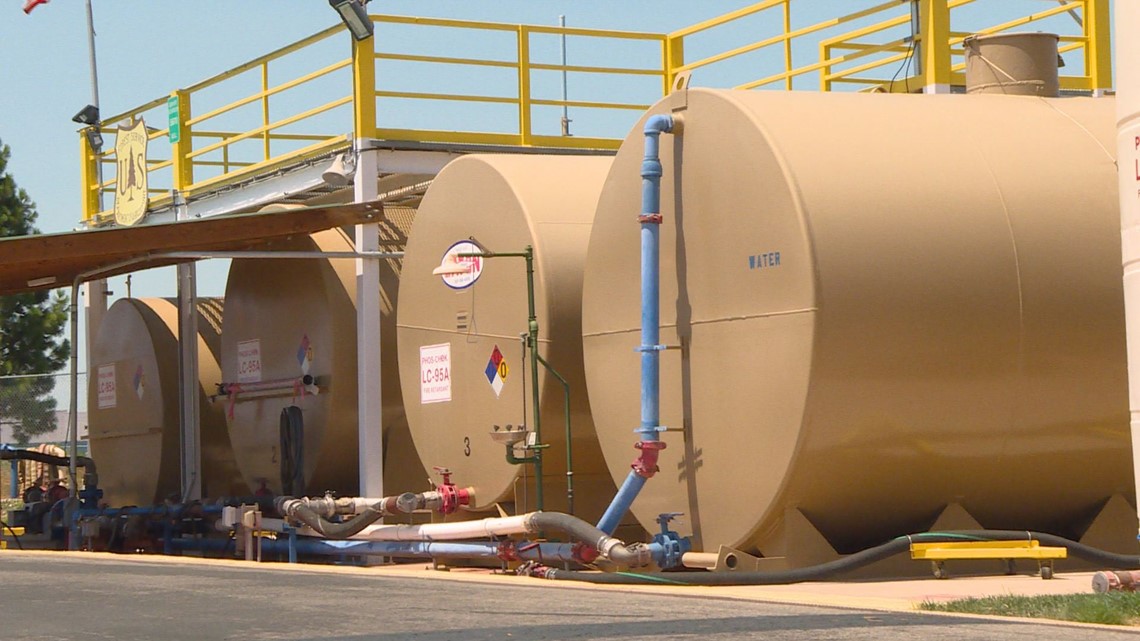
“This here is what is going on the planes right now,” said Scott Headrick, the assistant tanker base manager said, as he turned a lever, causing red liquid to spew out of a faucet into a sink where samples are checked.
“We want it to stand out from all natural colors,” he said, explaining they want other tankers and firefighters to see it clearly. “That’s why they go with the red.”

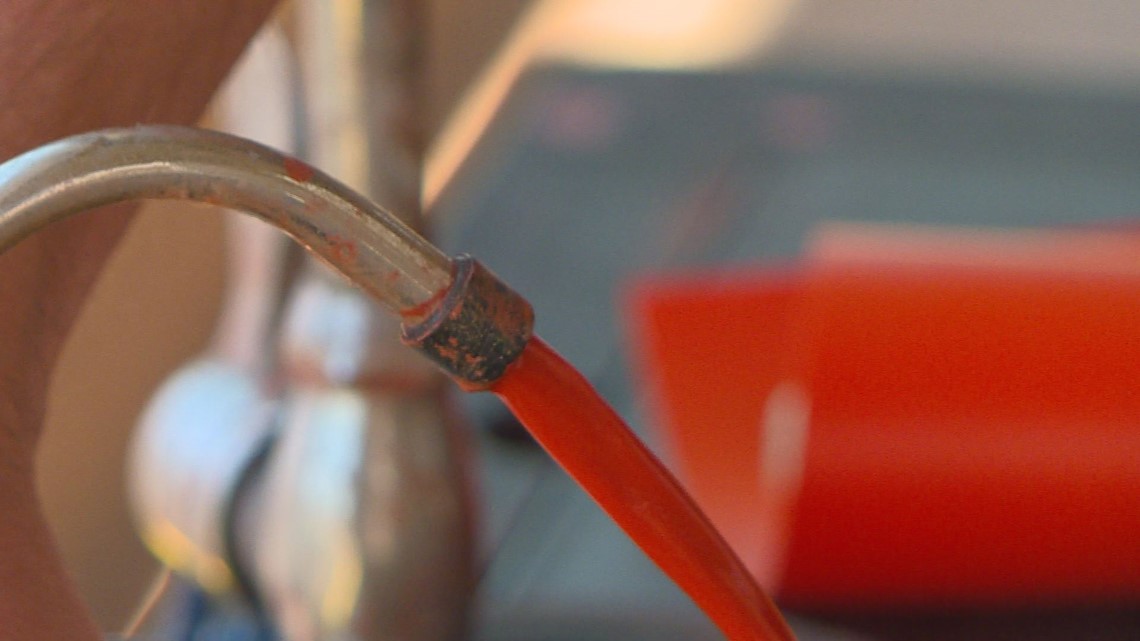
The base in Broomfield can mix up to 190,000 gallons of retardant at a time. When they’re running low, they can bring in more by the truckload from a supplier in Idaho.
Most planes that land at this base will take up to 3,000 gallons of retardant. Headrick said pilots decide how much retardant to take on based on weather conditions and the fuel level of their planes.

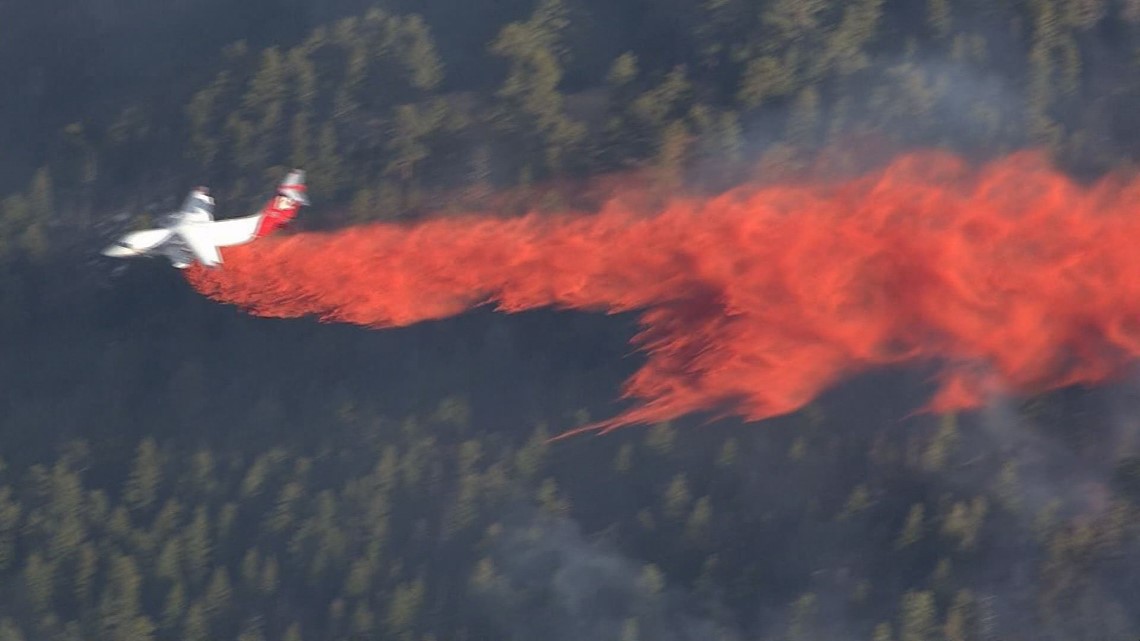
Since March, the Jeffco Air Tanker Base has pumped 296,279 gallons, which is enough to fill up about 100 planes. The base typically pumps about 250,000 gallons a year.
The mixture does not drop directly on top of fires. Pilots douse the path ahead of fires to stop them from spreading so quickly, allowing firefighters on the ground to work more efficiently and have a better chance of extinguishing them. The retardant remains viable for days after it's dropped, even after the water evaporates.
The Jeffco base is now fully staffed in case the need in Colorado escalates even further, McConnell said, with an eerie reminder.
“The season really is just starting in so many cases. We're just into July."

